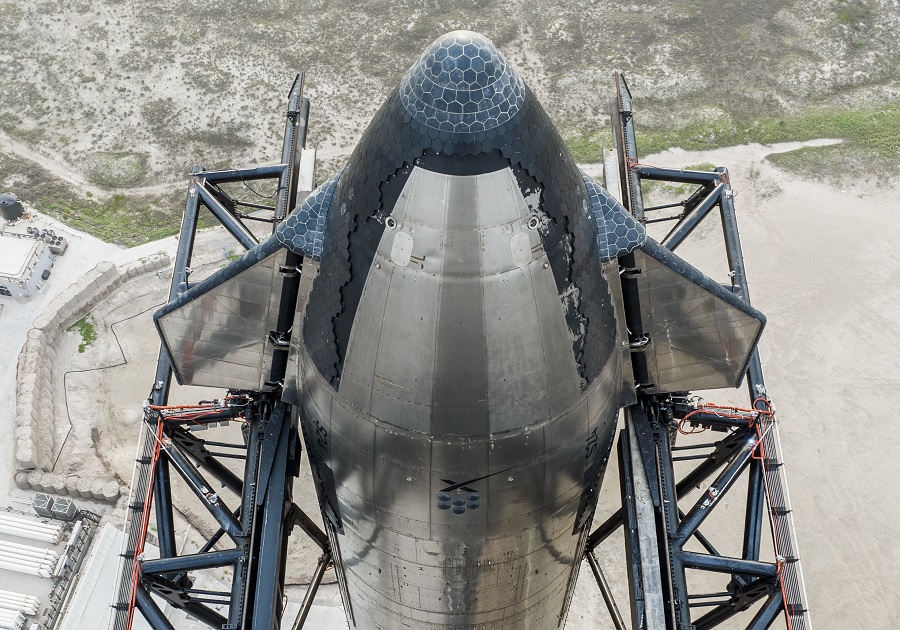
Elon Musk says SpaceX is ready to launch their giant Starship rocket on a historic orbital journey that’ll bring the massive spacecraft from south Texas to the waters north of Hawaii in an amazing 90 minutes as part of launch test.
“Starship is ready for launch….awaiting regulatory approval,” Musk Tweeted this weekend on the platform he purchased in October.
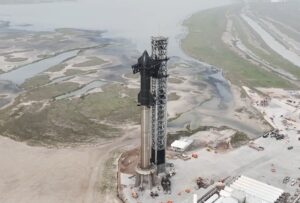
“Starship fully stacked at Starbase,” the SpaceX Twitter account added. The Super Heavy booster alone is 230 feet tall and 30 feet wide, housing 33 Raptor engines optimized for space travel. Together, they’ll head into space in the coming days for a quick journey around the globe.
Prior to the first orbital flight of the giant stacked rocket which has Starship perched atop a Super Heavy booster rocket, the FAA needs to grant SpaceX a license to fly the stacked rocket.
Last week, the FAA provided some clues for when SpaceX could attempt to launch it’s giant Starship rocket from Texas to Hawaii. According to an FAA Operations Plan Advisory issued at the time, SpaceX has its first launch window open on Monday, April 17 at 7:00 am local time, 2:00 am Hawaii time, and 8:00 am Eastern Time. The launch window is open for three hours and five minutes. Should conditions not allow lift-off on the 17th, back-up launch dates of Tuesday, April 18, Wednesday April 19, Thursday April 20, and Friday April 21 are also available with the same three hour, five minute launch window available each day. In today’s FAA Operations Plan Advisory, it simply shows Starship lifting off on April 17, time “TBD.”
While the FAA has published this tentative schedule, it is still possible the launch date and time may change for Starship. Prior to flight, the FAA must issue a launch permit to allow it to happen. And even if the FAA issues that permit, other technical or legal issues could force the launch to slip.
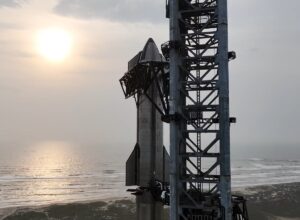
“The FAA has not made a license determination for the SpaceX Starship Super Heavy operation, and the FAA’s Command Center planning notice should not be interpreted as an indicator that a determination to issue a license has been made or is forthcoming,” the FAA said in a statement shared with reporters.
Because this is the first orbital test of this rocket, technical issues could be discovered along the way which would delay any launch.
Some have also threatened to pursue legal action against SpaceX should the license be issued, claiming the rocket could create environmental harm at launch, splash-down, or along the way of flight, especially if something catastrophic were to occur in-flight. While the chance is remote, it is possible a court could order at least a temporary delay to launch plans depending on that legal outcome.
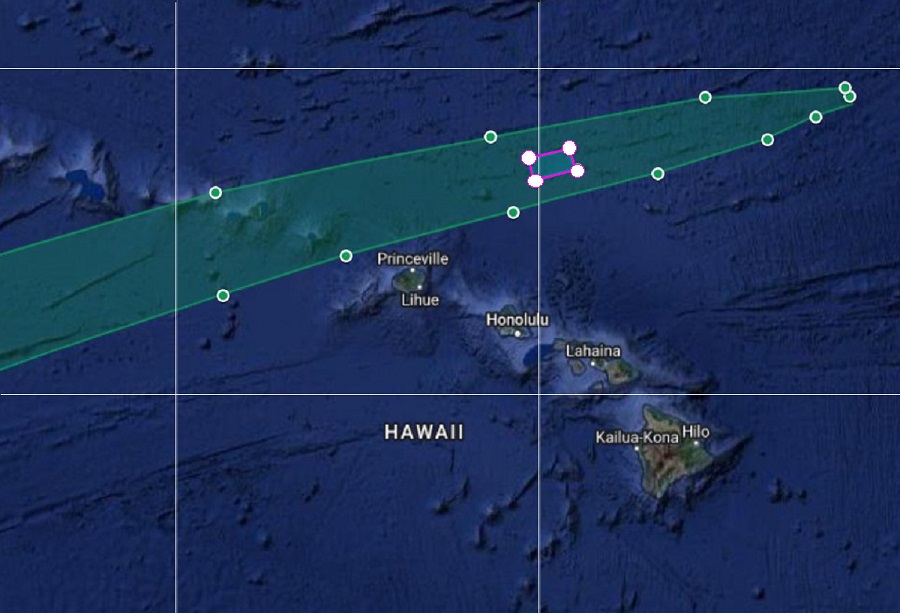
Lifting off is just one part of this historic test mission: the other will be to conduct a soft-landing in the waters off of Hawaii in the Pacific. After completing its orbital test, the giant rocket is due to splash down in the ocean just north of the State of Hawaii, prompting a series of marine warnings which were already in place for the historic flight.
According to the document available on the FCC website when SpaceX initially filed flight plans for this historic rocket launch, the orbital test flight will lift off from Starbase, which islocated at SpaceX’s Boca Chica complex just north of the Rio Grande River on the Gulf Coast, just above the U.S. / Mexico border. The facility is just below the popular tourist destination, South Padre Island.
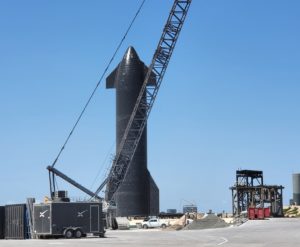
At approximately 170 seconds after lift-off in Texas, the Booster Stage of the Starship rocket will separate and perform a partial return. It is due to land in the Gulf of Mexico roughly 20 miles from the shore.
While the booster returns to water, the Orbital Starship will continue to fly up and out away from Texas, flying over the Gulf of Mexico and eventually through the Florida Straits. From there, it will achieve orbit.
In the paperwork filed with the FCC, SpaceX said they intend to “collect as much data as possible during flight to quantify entry dynamics and better understand what the vehicle experiences in a flight regime that is extremely difficult to accurately predict or replicate computationally.” To do this, SpaceX filed with the FCC to gain their blessing to use on-board telemetry systems to radio data to ground stations from both the Orbital and Booster stages of the rocket. “This data will anchor any changes in vehicle design…and build better models for us to use in our internal simulations.”
After nearly circling the globe, the Starship will splash down just north of Hawaii, roughly 90 minutes after lift-off.
SpaceX’s Starship spacecraft and Super Heavy rocket – collectively referred to as Starship – represent a fully reusable transportation system designed to carry both crew and cargo to Earth orbit, the Moon, Mars and beyond. Starship will be the world’s most powerful launch vehicle ever developed, capable of carrying up to 150 metric tonnes fully reusable and 250 metric tonnes expendable. Starship is roughly 394 feet tall and 29.5 feet wide, making it many times larger than the U.S. Space Shuttle and even larger than the Saturn V, the largest rocket launched from U.S. soil which used for NASA’s lunar exploration program.
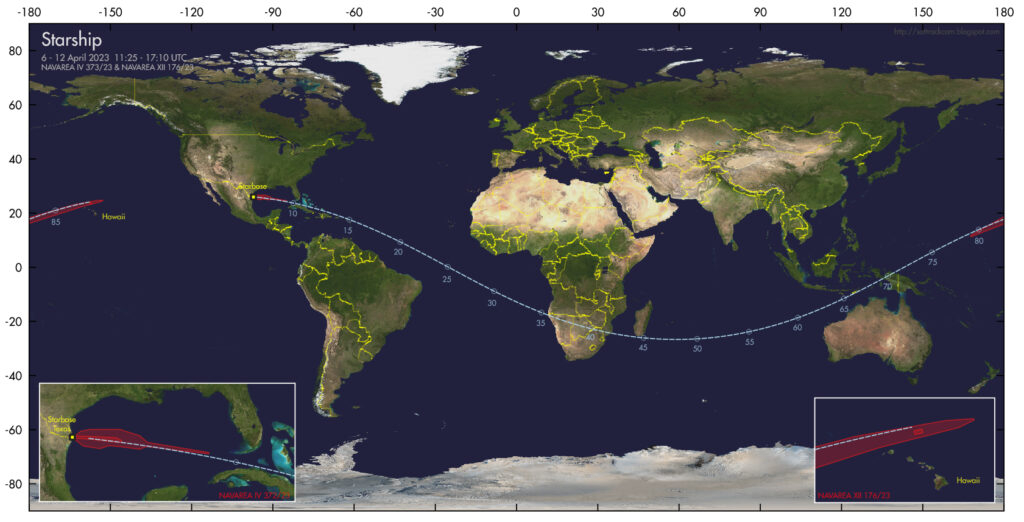
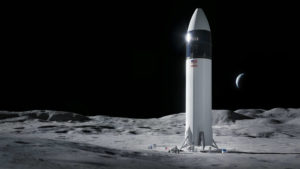
In 2018, Musk unveiled his plans for this rocket, which he originally called “BFR” or “Big Falcon Rocket.” At that time, he planned to fly this new spacecraft around the Moon by 2023 and eventually use it to shuttle passengers to the Moon, Mars, and beyond. Unlike the U.S. Space Shuttle or the existing SpaceX Crew Dragon capsule, SpaceX’s latest rocket is designed to carry 100 passengers at a time, much like a small commercial jet does today between two Earth cities. Based on their current timeline, if this orbital test is good, SpaceX would bring astronauts to the Moon as soon as 2025.
When SpaceX first announced plans to end their orbital test in the waters off of Hawaii, we reached out to Rodrigo Romo who at the time served as the Program Director for the Hilo, Hawaii-based Pacific International Space Center for Exploration Systems (PISCES), a state-funded aerospace agency. When discussing the test flight to Hawaii, Romo said, “I think it’s outstanding. It gives Hawaii another opportunity to participate in the aerospace realm.”